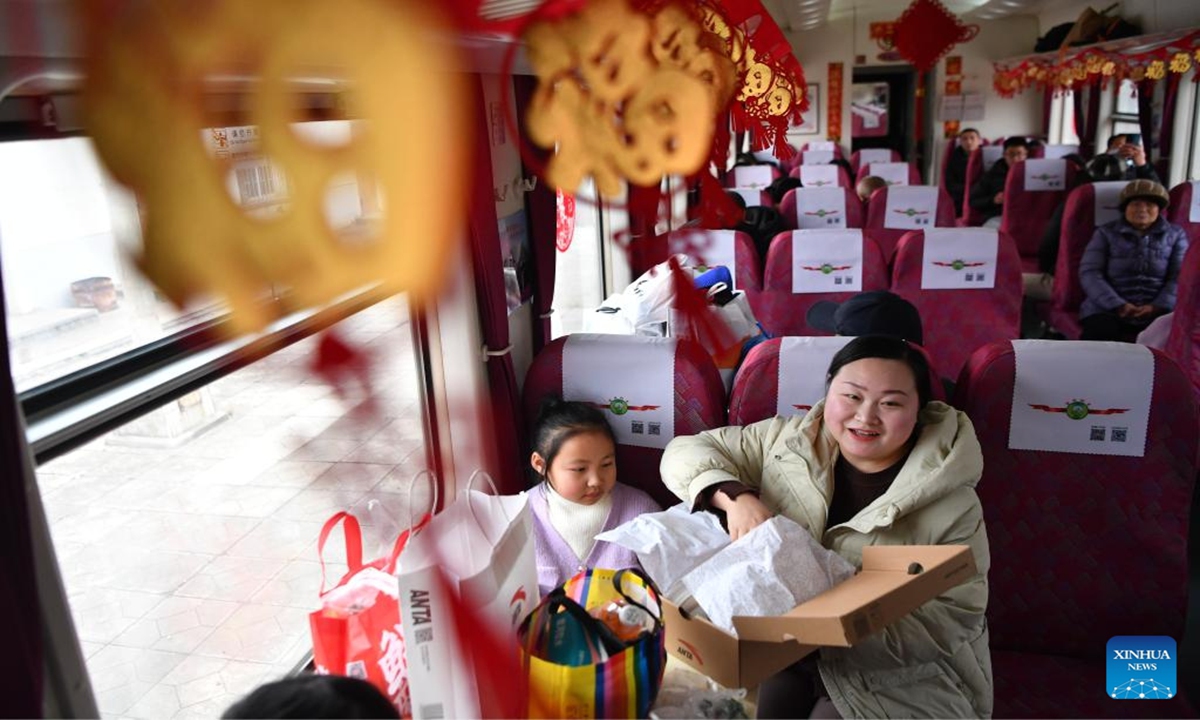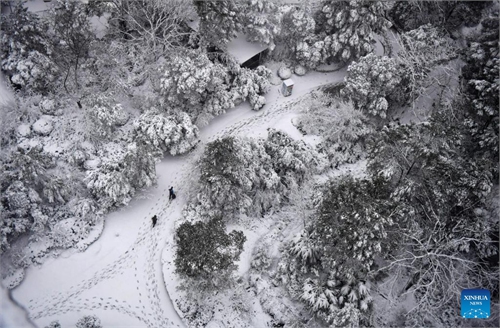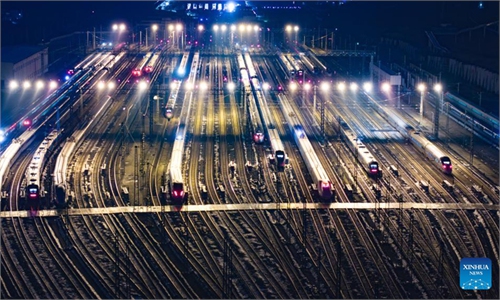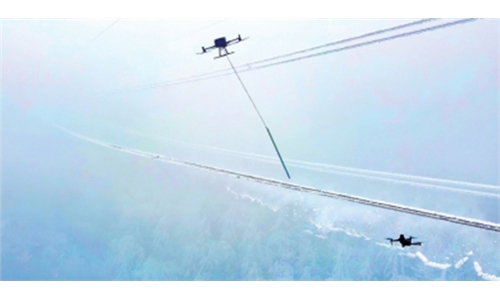
This photo taken on Feb. 4, 2024 shows passengers on their way home after shopping aboard the train No. 7503 in northwest China's Gansu Province. The pair of "slow trains" No. 7503 and No. 7504 run between Tianshui and Longxi in Gansu. Local residents are now taking them to travel between their towns and the urban areas to shop for goods in preparation of the upcoming Chinese Lunar New Year, or the Spring Festival.(Photo: Xinhua)
As the intensity of this round of blizzards weakens, railways and roads previously affected by the adverse weather in various parts of China have gradually returned to normal, with service personnel working around the clock to ensure the safety and smooth operation of chunyun, or the Spring Festival travel rush.
Travelers who have returned home in recent days told the Global Times on Thursday that their journey back was not at all affected by the freezing rain and snow weather. Instead, it has been even smoother than usual due to various support measures. "The miles of frozen terrain do not diminish the joy of people returning home," they said.
According to local authorities, railway transportation has resumed normal operation in Central China's Hubei, Hunan provinces and East China's Anhui Province, which were the most affected regions by the latest blizzards and frozen rains.
The national railway saw 13.1 million passengers transported on Wednesday, marking the first time during this year's chunyun that daily passenger flow exceeded 13 million.
To cope with the surging passenger flow, a total of 1,873 additional passenger trains were added on Wednesday across the country, setting a new record for the number of additional passenger trains during this travel rush period.
Liu, a passenger who took the high-speed railway from Beijing to her hometown Xingtai in North China's Hebei Province on Thursday morning, told the Global Times that all the trains leaving from Beijing West Railway Station were on time, and there was not a single delay due to bad weather.
Although the station was swamped with people and their luggage as well as all kinds of gifts to greet their families, everything was running efficiently, with people queuing up in front of the ticket checkpoints in an orderly manner.
What impressed her most was how fast the whole process was from arriving at the station to getting onboard the train. "I was worried that there might be too many people during this time of the year, so I arrived 30 minutes before departure time. But I soon realized my worries were unfounded," Liu said.
"Every detail was well considered so that passengers can go through as quickly as they can. For example, usually everyone would crowd into the elevator to get to the checkpoints, but this time I heard staff using megaphones to guide people to take the stairs, which greatly alleviated the passengers," Liu said excitedly.
"Additionally, there used to be only three or four lanes at the security checkpoints, but today I saw that there were around 10 lanes open," which only took her 10 minutes from entering the station to boarding the train.
A Shanghai resident surnamed Lu told the Global Times that there had been some heavy traffic congestions due to the snowy weather and the large traffic volume both entering and exiting the city in previous days, but road situations have picked up significantly.
"Locals were actually quite thrilled to see the snow because it's rare in southern China. My friends and I called each other excitedly when we first saw the snowfall, which only added to the festive atmosphere against the background of red lanterns and all kinds of colorful decorations," Lu said.
The National Meteorological Center said on Wednesday that during the Spring Festival holidays, temperatures in most parts of China are expected to rise, with average temperatures higher than usual for this time of year. There will be no large-scale rain, snow or icy weathers, or hazardous weather conditions such as persistent fog and haze.



